“Energy harvesting” is a very attractive buzzphrase. The market for devices that can soak up unused energy and put it to work has been steadily growing over the past few years. Many wristwatches available today don’t need batteries or winding. They can glean energy from the motion of the user’s wrist or the light of the Sun.
A wristwatch is a fairly low-power device that lends itself to this kind of technology, but the Carbon wristwatch plans to do much more than just keep time. While the technology isn’t too farfetched, it’s the business decisions of the team that draw the potential success of this product into question.
Free energy
The Carbon watch claims to use a small solar panel built into the face of the watch to charge an internal battery that can be used to add an extra boost to your smartphone when you need it. It won’t charge the phone up all the way, but the extra 650-800mAh can give you a few more hours of use when you really need it. It’s certainly an alluring idea as the market for portable backup batteries is always growing larger, and this solution doesn’t necessarily require that the device needs to be manually recharged.
The project page claims that the device has a “650-850mAh” battery and will charge in full sunlight in “Approx. 8 hours” using a 24% efficient solar panel.
24% efficiency is pushing the limits of what commercial monocrystalline solar panels can do, but it’s not outside the realm of possibility. What does need a little more clarification is their definition of “full sunlight”. Let’s do some quick estimations to see what kind of light this device would need to charge its battery.
Firstly, let’s be optimistic here and start with the smallest possible battery, 650mAh. Lithium Ion batteries operate at around 3.7V which means that their cell can store about 2.4 Watt-hours of energy. 2.4 Watt-hours obtained over 8 hours works out to about 0.3 Watts.
So in order to charge their battery in the time they claim, they need 0.3 Watts of power from the panel. Their solar panel dimensions can be estimated using the case dimensions they have provided.
Let’s call it about 42x35mm which is around 0.00147 square meters. Assuming a 90% battery charging efficiency, if they want 0.3 Watts of power at 24% solar efficiency, they’ll actually need 1.388 Watts of incident sunlight power. That works out to 944 Watts per square meter.
This number actually isn’t that unrealistic. Wikipedia places the incident power of direct sunlight somewhere around 1000 Watts per square meter. My concern comes less with the numbers and more with the origin of the numbers.
This isn’t the first time Carbon has been pitched on Kickstarter. After not reaching their $48,000 funding goal in late March, the team decided to launch a new campaign that is almost identical except for the much smaller goal of $15,000 and a few minor details.
Without getting into another discussion of what funding goals even mean, one of the details that has changed from the last campaign is the solar charge time. It also changed a few times during the original campaign as shown by archive.org:
Considering the primary function of this device is to charge a battery from sunlight, one might hope that the company would have a better grasp on what it’s capable of before accepting funding. In February, they were legitimately standing by a product that would require three times the incident solar radiation that we have available to us on Earth to function as advertised. What they’re showing now is definitely possible, but these wildly fluctuating specifications are concerning to say the least.
Buzzwords
There isn’t a whole lot to talk about for a single purpose device. There’s no API, no app, no connectivity to the Internet of Things. When you boil it down, this device is a solar panel, a battery, and some components in between. As a result, the Energy Bionics team has resorted to a pretty liberal smattering of tech speak and buzzwords that may sound impressive, but don’t really mean anything.
For example, let’s take a look at their disclaimer regarding the above charge time estimates:
A DC to DC boost converter allows power at one voltage to be converted to another. Any battery powered phone charger will require one as lithium-ion batteries operate at 3.7V and phones charge at 5V. Furthermore, “maximum power point tracking” is a technology that has been around since the beginnings of solar power in the 1960s. It’s little more than an electrical power converter that keeps the power source operating where it is most efficient just like the gearbox in your car.
From the looks of it, they’re using the Texas Instruments BQ25504, a part that’s been out since 2011.
Sure, it’s a good part that is perhaps more efficient than some competing technologies, but it’s silly to use that to brag about your device’s capabilities when really the only determining factor is whether or not you decided to plunk down $4 for the part and implement it exactly as recommended in the data sheet. Anyone who isn’t using a part like this is just cutting costs. It’s not innovation, it’s economics.
The inclusion of “over/under charging thresholds” in the next sentence is especially redundant. Any device that is using a lithium ion or lithium polymer battery will need some form of over and under voltage protection to prevent permanent damage to the batteries. You can’t run lithium polymer batteries down to 0V like you can with alkaline. Doing so will severely and permanently reduce the capacity of the battery next time you try to charge it up. Doing nothing to prevent overcharging could cause the battery to fail in a much more spectacular and dangerous way.
It’s such an obvious requirement that when you order batteries, you can often request that they have this protection circuitry (PCB) built in to the cell:
The assumption is that if you don’t buy the battery with the protection circuitry built in, it’s because you’ve implemented your own solution somewhere else and don’t want the PCB increasing the size of the battery’s outline. Using a battery without a protection circuit is product development suicide.
So is it a high quality device? I’m not sure. From what I can tell, they’re putting a lot of effort into bragging about what are more or less industry standard solutions while not providing too much evidence that their particular implementation works well.
Other challenges
There’s one fairly important feature of a solar watch that the team has yet to demonstrate: the ability to actually tell time.
All of the current models show the watch face and hands painted on the surface of the panel.
Sure a broken watch is right twice a day, but even a sundial would be more useful than this.
The claim is that they’re going to insert a watch movement into the device that places the hands hovering over the panel. It’s a cool design concept, but it’s also a challenging engineering problem. Firstly, judging from their images, the electronic guts of the circuit will wrap around the edge of the case which would leave a huge rectangular space in the middle for the battery:
This is important as exotic battery geometries are expensive and take a large amount of development time while rectangular batteries can often be purchased “off the shelf”. Unfortunately, placing the watch movement in the center of the battery will turn this rectangular space into an exotic donut shape. It’s possible that the movement is very thin, but whatever it is will necessarily encroach on battery space. The team hasn’t demonstrated that it won’t be a problem.
Secondly, making a watch movement protrude from the solar panel will require some kind of hole in the watch face. I found a few examples of solar watch faces with holes online, but these are made using amorphous silicon, a much less efficient solar technology that is primarily used because of the exotic shapes that can be made with it. I haven’t found any similar examples using monocrystalline.
Monocrystalline panels are made from a single crystal of silicon which tends to dictate the shape of the panel. The typical panel is made octagonal which is a good compromise between a rectangle that will pack most efficiently and the circular shape of the silicon wafer as it is produced. It’s unclear to me whether a monocrystalline panel could be produced with a hole. It’s more likely that to make something like the Carbon watch, several different panels will need to be combined with gaps between them. These gaps will reduce the effective surface area of the panel and could further reduce the solar efficiency of the device which is already skating a thin line.
Also, technical arguments aside, how is the user supposed to set the time if the big knob is actually a screw top that protects the charging port?
It may not be a huge problem, but it’s a major product feature that they haven’t demonstrated, and it’s not even listed in their risks and challenges section.
If at first you don’t succeed…
As mentioned above, this is the second time Energy Bionics has attempted to run a campaign for this product. The biggest thing that has changed since the last campaign is the funding goal which was originally set at $48,000. The previous campaign mentioned an $18,000 FCC certification cost, a $6,000 mold tooling cost, and a minimum manufacturing quantity of 500:
While the new campaign doesn’t go into as much detail:
Perhaps they ditched the details because it would have been hard to justify an $18,000 FCC certification cost for a project that is now only asking for $15,000. Likewise, at $125 a pop, a $15,000 goal will only require 125 preorders which is 375 less than they apparently needed before.
Maybe something happened and they figured out how to get funding elsewhere. Maybe they’re really hoping that reaching the smaller goal earlier in the campaign will motivate indecisive backers to buy in. Maybe they have no plan and just don’t want to leave Kickstarter empty-handed. Unfortunately, they’ve offered no explanation for why their product suddenly costs a third as much to develop as it did before.
By asking for less than they need, they are taking a huge gamble with backer money which may dry up before they make it to production. I’d like to see an explanation.
Conclusion
There are a number questions to be asked about the utility of a device that requires 8 hours of direct sunlight to provide a few extra hours of phone time. These questions are probably what prevented the requisite number of backers from forking over $125 the first time around, but they’re not the kind of questions we like to ask on this blog.
Is the device possible? Yes. That being said, there are a number of shady details about this team that lead me to believe that they aren’t the guys to pull it off. They launched a second campaign almost immediately after their first one failed. Their marketing materials are technically fluffy to a point that transcends the normal marketing-speak and makes anyone with a small amount of technical knowledge scratch his head. Finally, they haven’t demonstrated that the device can work, and they’re still (at time of writing) $18,000 under their original budget.
I suspect that the device will undergo some changes before it ships. The battery capacity will drop slightly, the shipping date will slip, and the solar charge time will rise to the point that the average user barely notices the solar boost and ends up charging the watch with the wired charger any time they want to use it.
And let’s just hope they make it to $48,000.

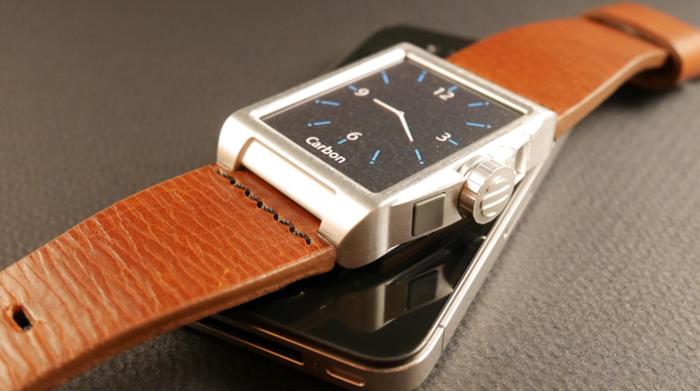


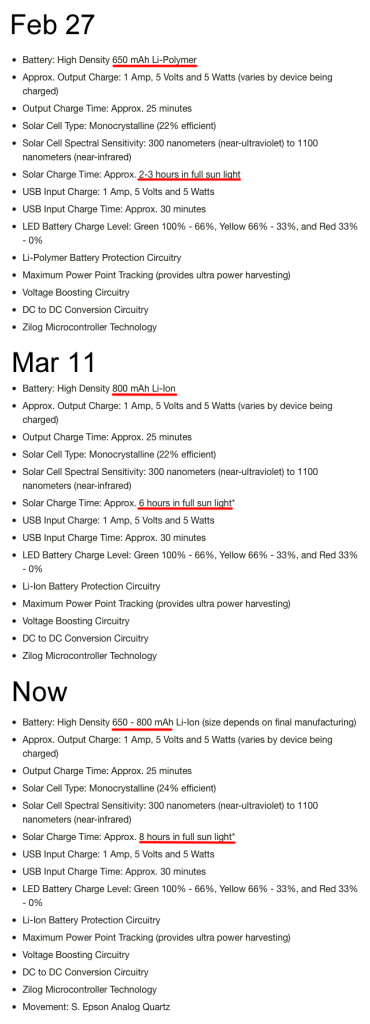

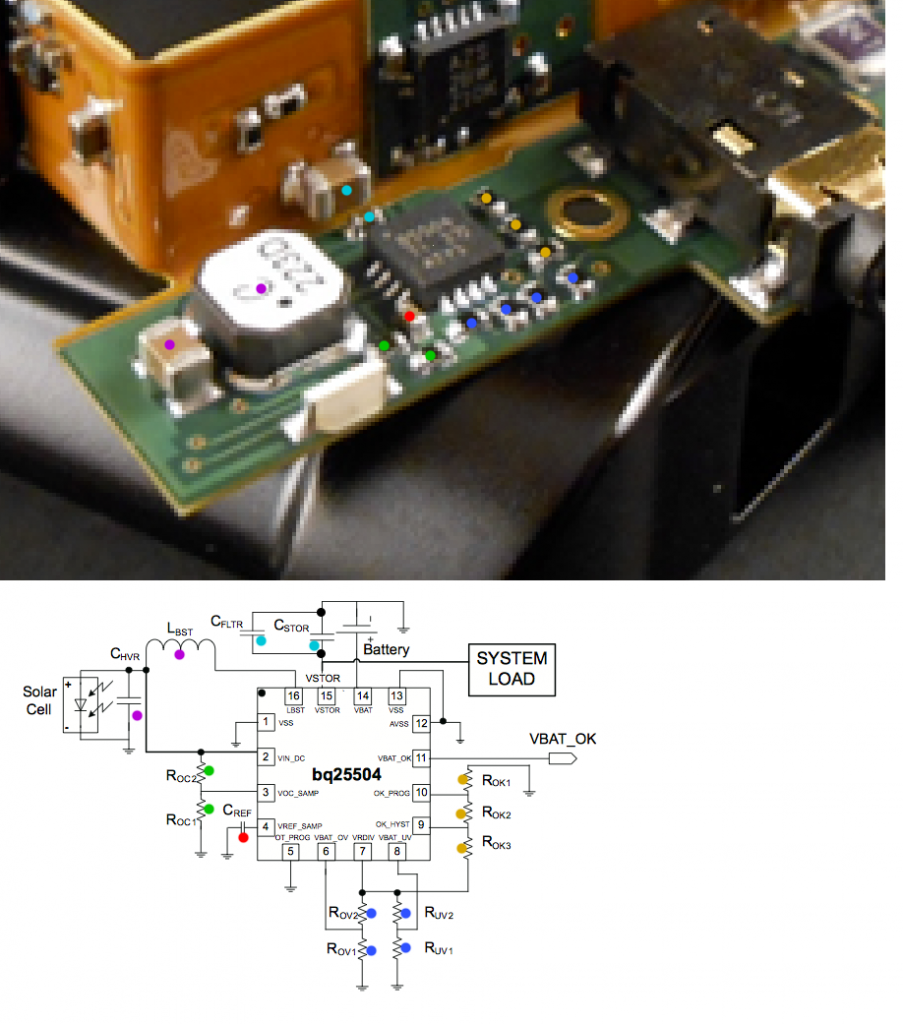
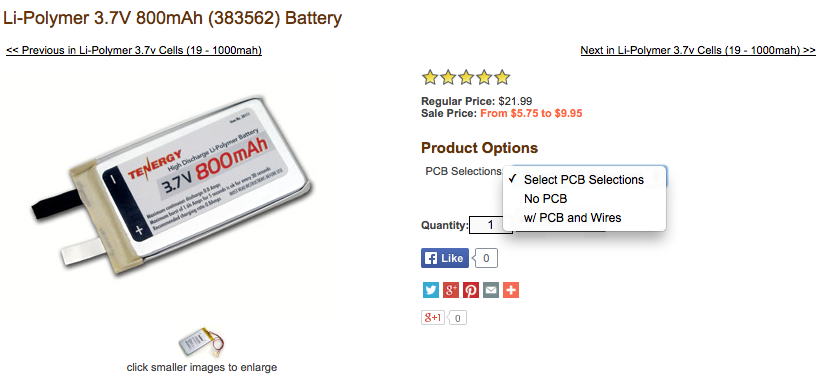
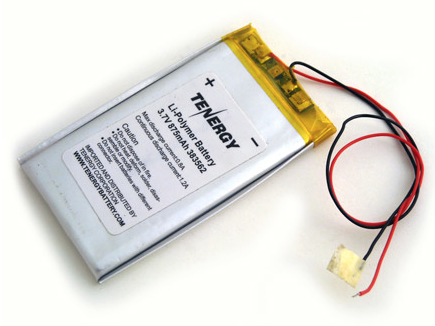
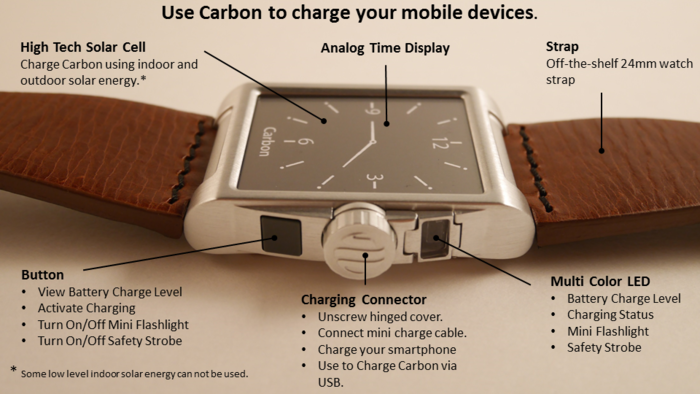
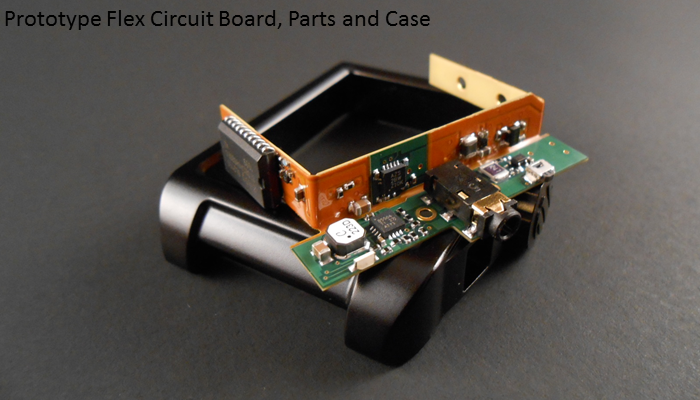
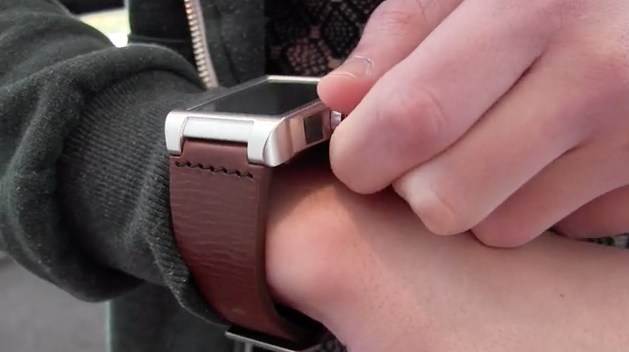
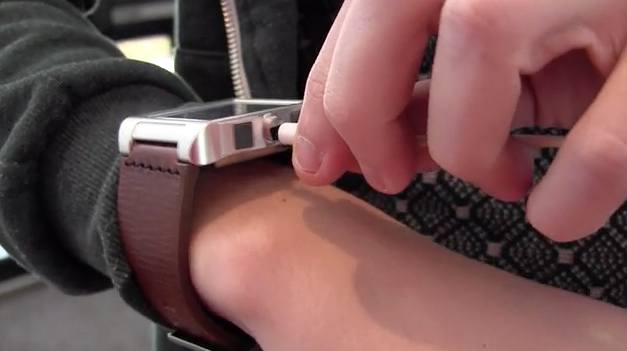
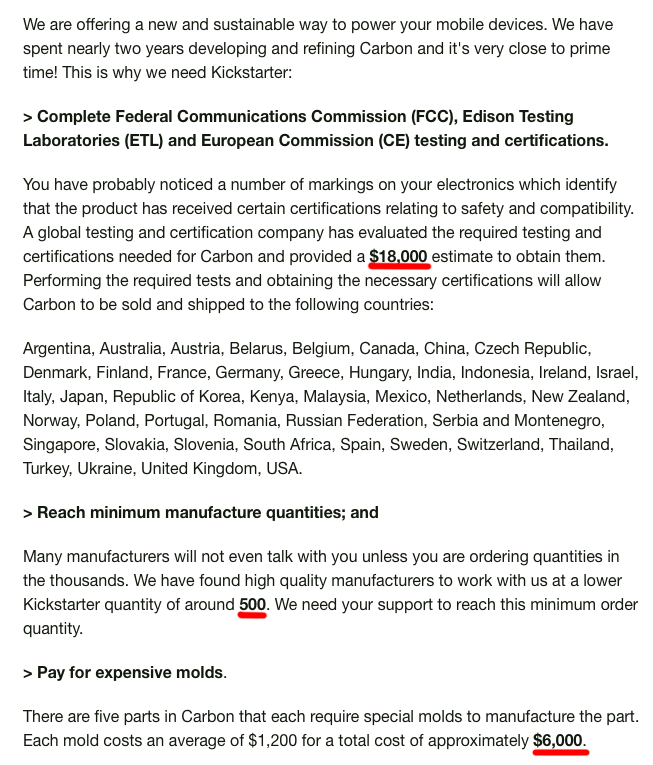
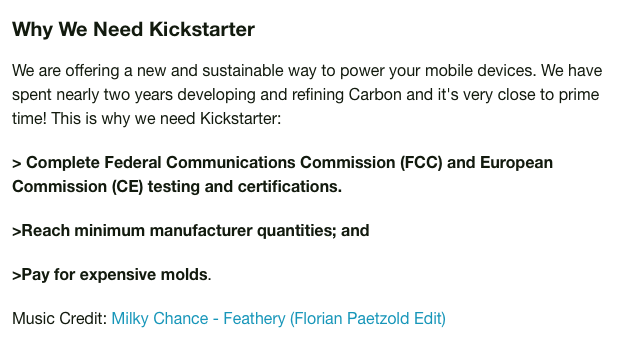

We appreciate the interest in Carbon and the desire to make sure it turns out to be what we claim. We believe in what this website is about. Our only wish is that we were given the opportunity to provide clarifying information before the article was posted.
Claims regarding the battery, solar cell design and watch movement are simply not accurate. Our lithium ion battery being used is a rectangular battery. The analog watch movement sits on top of the battery and the printed circuit board, just under the solar cell. Our monocrystalline solar cell is a custom design by a German manufacturer.
It’s important to note that we have funding to complete this project without any Kickstarter funding. Carbon is a forward thinking approach to wearable energy and we greatly appreciate the confidence that our backers have in us. Anyone should feel free to contact us via energybionics.com for more factual information. We will also make some clarifications on our Kickstarter page.
Thank You,
Sean and The EnergyBionics Team
If you have funding to complete the project without Kickstarter backing then why, in your Kickstarter campaign, do you say you need the funding to pay for molds, testing and certification? The two statements cannot both be true, so which is it?
Skeptic,
Thank you for spending the time to learn more about our project. We identified the following as Why We Need Kickstarter:
1. Complete Federal Communications Commission (FCC) and European Commission (CE) testing and certifications.
2. Reach minimum manufacturer quantities; and
3. Pay for expensive molds.
You left out No. 2 in your comment which is critical. We need volume to help achieve better pricing.
We see nothing wrong with advising backers that we need Kickstarter to help support all three mentioned above. At the same time, we have the financial capability to see the project completed. Perhaps adding the words ‘help support’ to why we need Kickstarter would help a skeptic?
Thanks again.
Sean
Sean,
I’m interested in your product and the idea of having some extra milliamps on your wrist is great. It might actually get me to wear a wrist-watch again! But I also have an extensive background in solar cell manufacturing having worked with a number of names in the industry including BP Solar, First Solar, Photowatt, and others, primarily on their process automation. The hang up for me is the solar cell. Specifically how the hole for the watch movement will be added to it. It may seem silly but that appears to me to be a huge engineering challenge.
While I doubt your supplier will reveal details of the mfg process, certainly you can reveal where in the process the hole is added to the cell. Is it before wafer slice, AR coating, final cell sizing, tab attach, etc? And can you tell me if they are adding the hole mechanically (with a drill) or with something else? Knowing the cell manufacturing processes that I do, the hole would be a challenge and would certainly increase the cost of an already expensive cell. (which leads me to another question… are these first-run virgin cells or are you getting cut-down 2nd-hands to reduce cost? Cut-downs aren’t bad but that implies certain challenges to add a hole into a finished monocrystalline cell.)
Better yet, could you just post a picture of the solar cell hooked up with a load & voltmeter to the project page? Surely your mfg has provided a sample/prototype to prove they can do what they claim they can do. I have no reason to doubt your claims but as they say, a picture is worth a thousand words.
Hi Jason, Well for us at “returnofthesun” in Germany its not a BIG DEAL to make a solar panel with a hole in it. My smallies is a 8 cell panel that is only 29 by 14 mm made with 6 by 6 mm solar cells and the smallies solar cell to date is just 2 by 2.4 mm. Take a look at my facebook page Returnofthesun U.G. for more info about mini and micro solar panels that we make. And yes we do make the one for the Carbon.
Let’s look at the whole thing one more time from a the view point of a solar rocket scientist, (Me)
Ok so I have made solar power units that are to be fitted on the back of a bee, solar cell with a build in Mpp tracker and battery charger circuit that will sit on the belt clip of the Apple Nano 6th gen.
Now to the Carbon, it will use a solar panel with 24% efficiency (yes I have them) giving it a charge time of about 8 hours in full sunlight (at means clear sky that has no less then 1000 watts of power) The best a Chinese product can do is in 22 hours and that no BS!
A challenging engineering problem about a hole for the watch hands? O come on, this is tinker toy stuff for me to make! I am I really that good that this solar engineering stuff or is everyone else just way behind?
Thank you for sharing such an informative
I LOVE IT !!!! Your blog is perfect !!
Better yet, could you just post a picture of the solar cell hooked up with a load & voltmeter to the project page? Surely your mfg has provided a sample/prototype to prove they can do what they claim they can do. I have no reason to doubt your claims but as they say, a picture is worth a thousand words.